Studies Show Yoga in Prisons Offers Support and Rehabilitation for Inmates
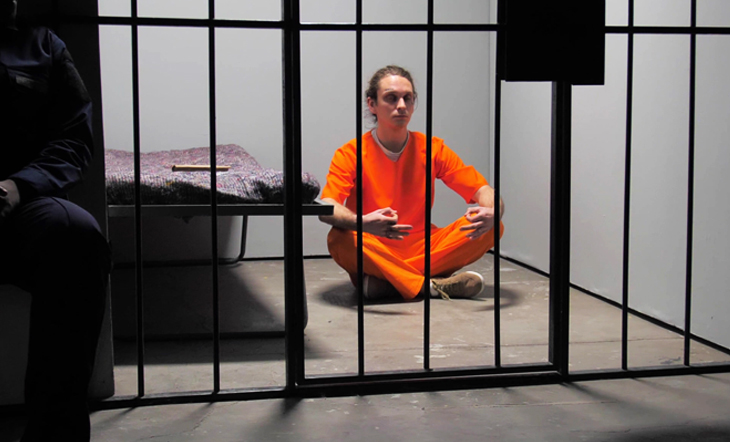
Crime (and its consequences for both the perpetrator and victim) is an emotive and complicated issue.
Questions around justice, punishment, how to support victims, and how best to deal with those who commit crime are perhaps some of the most important that we ask as a society, and no one can claim to have the perfect solution.
Research into the causes and impact of crime appears to suggest that prevention through social support programs and rehabilitation are the most cost-efficient and effective ways to reduce crime over the long term.
Unfortunately, these tactics take years of work and significant investment, and the public isn’t always receptive to action that might be perceived as “soft” or ineffectual.
The Use of Yoga in Prisons as Part of Rehabilitation
It is understandable, given that those directly affected by crime can be deprived of treasured possessions, experience significant trauma, or even lose a loved one due to the actions of a perpetrator, that often our first instinct is to punish.
However, the more we understand about factors such as childhood abuse, neurological development, addiction, and poverty, the more we can see that while crime is in no way justifiable or excusable, it can often be explained.
Through ongoing research, it’s these explanations that can help us to effectively address – and ideally prevent – crime. In a society where we agree on human rights and protections, we have a duty of care to the people we incarcerate, and should endeavor to ensure they leave prison in a healthier mental state than when they entered.
While only a small part of the wider picture, the use of yoga in prisons is a promising tactic to help reduce recidivism rates and improve relationships within a prison environment.
By helping prisoners to better deal with their restricted surroundings, heal from past traumas, recover from addiction, and increase their emotional intelligence, yoga can be a component in creating better outcomes both for the prisoners personally, and for society as a whole.
Yoga in prisons isn’t the only powerful tool: Here’s How Meditation Is Helping Convicts Get out of Prison (Video)
First of All, Why Do People End Up in Prison? Here Are 7 Common Denominators of Inmates:
Criminal behavior rarely happens spontaneously. And while there is no factor or combination of factors that make someone destined to enter prison, there is a vast network of influences that make that situation more likely – including discrimination within the justice system.
1. Poverty
Incarcerated people in all gender, race, and ethnic groups earned substantially less prior to their incarceration than their non-incarcerated counterparts of similar ages.
Men who grew up in the poorest 10% of American families are 20 times as likely to be imprisoned by their early 30s than men from the richest 10% of families.
2. Addiction
Today, there are more people behind bars for a drug offense than the number of people who were in prison or jail for any crime in 1980.
Yoga can help with addiction too: The (Science-Backed) Power of Yoga in Addiction Recovery
3. Discrimination
It’s important to note that the racial and ethnic makeup of U.S. prisons continues to look substantially different than the demographics of the country as a whole.
This suggests the influence of systematic racism, socioeconomic inequity, generational trauma, and daily instances of discrimination all have an undeniable impact on prison population statistics.
4. Foster Care
While it is difficult to find similar data for the USA as a whole (perhaps due to differences across certain states), the UK’s Ministry of Justice found that 24% of prisoners stated that they had been in care at some point during their childhood.
Those who had been in care were younger when they were first arrested, and were more likely to be reconvicted in the year after release from custody than those who had never been in care.
5. Abuse
Many prisoners had experienced abuse (29%) or observed violence in the home (41%) as a child – particularly those who stated that they had a family member with an alcohol or drug problem.
Those who reported experiencing abuse or observing violence as a child were more likely to be reconvicted in the year after release than those who did not.
6. Upbringing
37% reported having family members who had been convicted of a non-motoring criminal offense, 18% had a family member with an alcohol problem, and 14% with a drug problem.
It makes intuitive sense that facing difficulties, especially in early life, will have an impact on people’s behavior – contributing to the cycle of abuse, increasing vulnerability for mental health problems and addiction, and undermining impulse control – and neuroscientific and psychological research supports this view.
Childhood abuse can lead to changes in the structure of the brain, while being exposed to violence in the family home can make children more likely to commit violence as an adult.
7. Mental Health
More research, including some reported by the American Psychological Association, found that 64% of jail inmates, 54% of state prisoners, and 45% of federal prisoners report mental health concerns. Substance abuse is also rampant and often co-occurring.
About 10% to 25% of U.S. prisoners suffer from serious mental illnesses, such as major affective disorders or schizophrenia (compared to around 5% in the general population).
In the United States, prisoners are four times as likely to commit suicide than the general population.
How Yoga Affects Your Mental Health (According to a Holistic Psychotherapist)
Here Are 4 Benefits of Offering Yoga in Prisons:
There are a variety of ways it’s thought yoga in prisons can be helpful for inmates, with research including:
1. Reduces Obsessive-Compulsive and Paranoid Thinking
A study (led by Professor Nóra Kerekes at University West, Trollhätten in Sweden) which was published in Frontiers in Psychiatry, found that 10 weeks of regular yoga can lead to a significant reduction in obsessive-compulsive and paranoid thinking.
Researchers say this, in turn, can make reoffending less likely. It also reduced physical symptoms caused by stress, including breathing problems and stomach upsets. This effect was specific to yoga rather than exercise in general.
2. Improves Well-Being and Decreases Aggression
Another study which took place in medium and high-security prisons in Sweden demonstrated that yoga relieved stress while improving concentration, sleep quality, psychological well-being, and emotional state.
Researchers also observed a decrease in aggression and antisocial behavior.
3. Reduces Recidivism
A 2016 review of the literature on yoga in prisons concluded that, while there needed to be more high-quality research, yoga appeared to improve key variables linked to offending (such as impulsivity and aggression).
It also offered improvements in variables that support prisoners’ ability to participate in other treatments aimed at reducing recidivism, such as emotional regulation and depression.
4. Regulates Emotions
In 2019, a pilot study from Australia found that prisoners taking part in a yoga program displayed better emotional regulation and ability to engage in goal-oriented behavior, while also reporting less feelings of anxiety, stress, and depression.
Why Yoga in Prisons Is Important
With such a high proportion of the prison population coming from neglectful or abusive backgrounds, or having grown up witnessing violence in the home, yoga’s impact in trauma recovery may be a key element in the positive outcomes seen in the examples above.
Childhood trauma increases the risk of behaviors that can lead to crime (such as addiction and antisocial behavior) and a lack of family support can undermine the bedrock from which people are meant to explore the world, giving them less emotional and financial stability in life.
It’s also theorized that factors such as early brain injury, socioeconomic standing, and childhood experiences can directly impact our likelihood to commit crime – especially when negative influences are grouped together.
For example, a person may be more naturally impulsive or less empathetic by nature – neither of which necessarily leads to maladjusted behavior or makes a person “bad.”
But when combined with witnessing violence in the home – a traumatic childhood experience that creates constant fear – it may lessen that child’s reactiveness to violence as a survival mechanism.
Being more inured to violence in this way makes it easier for a person to commit violent acts because that person no longer experiences the normal repulsion and fear in doing so.
Combined with brain changes that lessen impulse control (which can be caused both by injury and early neglect) and social factors such as growing up in an area with few resources and poor influences (such as criminal gangs), risk factors combine to create an adult who is far more likely to commit a violent crime.
For other individuals, the outcome may be poverty and mental health issues like post-traumatic stress disorder (PTSD), increasing the risk of drug use and theft to support themselves.
However, none of this is inevitable nor is it, in many cases, irredeemable.
Mindfulness + PTSD: 5 Ways That Practicing Mindfulness Can Help Post Traumatic Stress Disorder
How Yoga in Prisons Helps
Yoga and mindfulness have been linked to positive brain changes (alongside changes in the endocrine system and levels of neurotransmitters within the brain), which could improve the symptoms of mental health problems such anxiety, depression, and PTSD.
Increased hippocampal volume is linked to better memory and less impulsivity, while yoga’s relaxing effect on the nervous system will begin to counterbalance a lifetime of stress.
Addiction is also a challenging problem in US prisons (with prisoners even becoming addicted to illicit substances while serving their term), and yoga is increasingly being used within rehab centers and as a complementary therapy alongside treatment plans to help people stay in recovery.
Yoga in prisons can allow inmates to start to navigate the world from a more stable and balanced place.
Once again, it’s the changes yoga creates in the brain and nervous system which appear to be so helpful in this regard, strengthening resilience and breaking the feedback loops that characterize addiction.
Finally, yoga can offer people a point of calm in an often stressful environment, and can help build self-esteem and confidence. James Fox, founder of The Prison Yoga Project, stated in an interview when questioned about his motivation to start the project that:
“These boys came from neglectful and abusive backgrounds, most of them [were] on medication, a real mess . . . I realized that working with their bodies was so much more effective than just working cognitively. I started to see yoga as complementary therapy.”
By including yoga in these prisoners’ rehabilitation plan, it helps support the other efforts (such as therapy, education, and pharmaceutical prescriptions) that aim to let people leave prison in a healthier emotional place.
The Takeaway on Why Yoga In Prisons Is Beneficial
Research suggests that crime, while complicated, is broadly not committed by happy, settled, and confident people, but by those who have had troubled pasts, feel under intense socioeconomic pressure, and who experience continued emotional pain.
While it can’t tackle every problem, yoga in prisons can allow inmates to start to navigate the world from a more stable and balanced place, and start a healing journey which benefits both themselves and the society we all live in.


This Month's Letter
From the Editor
Monthly motivation and food for
thought from our founder.

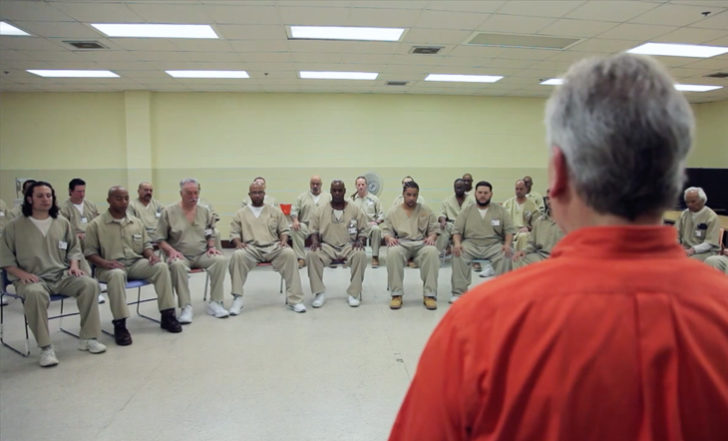


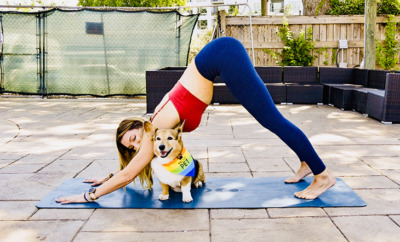

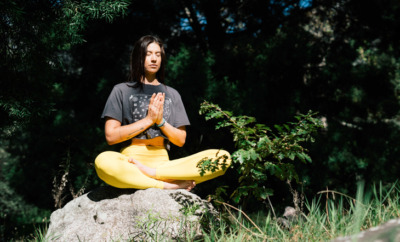
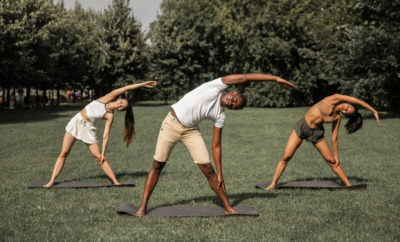





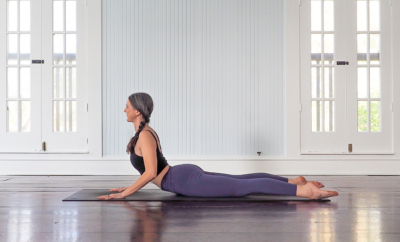




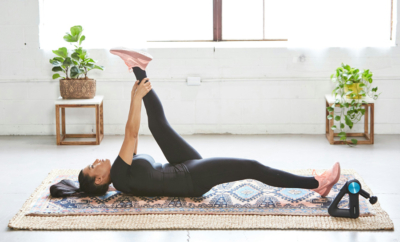











Comments